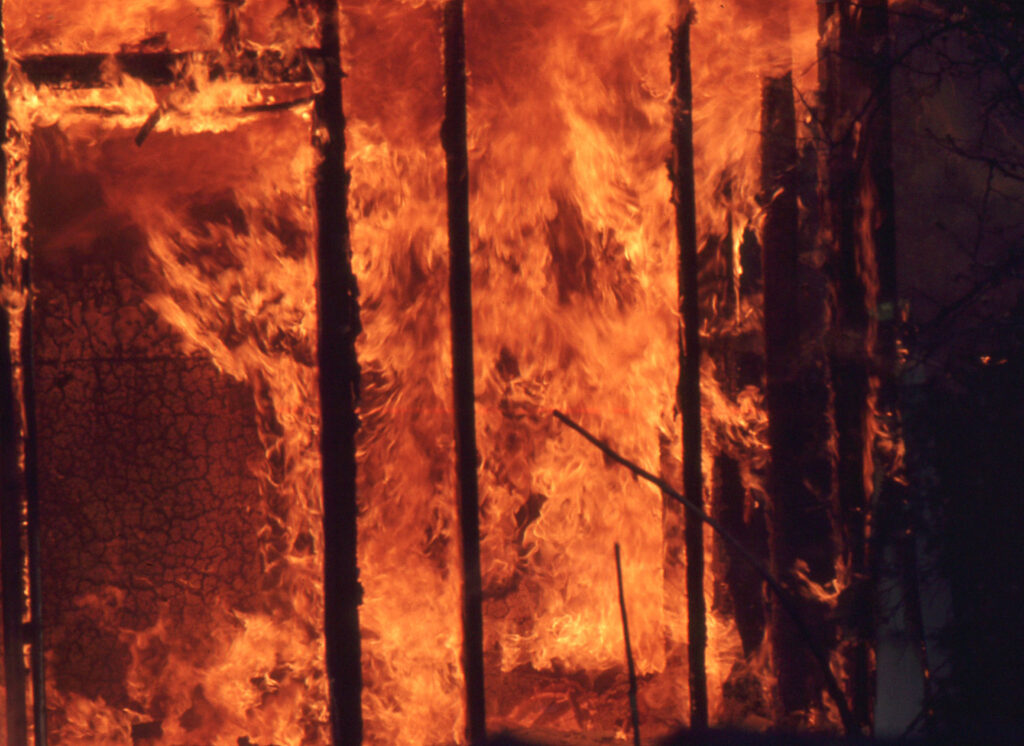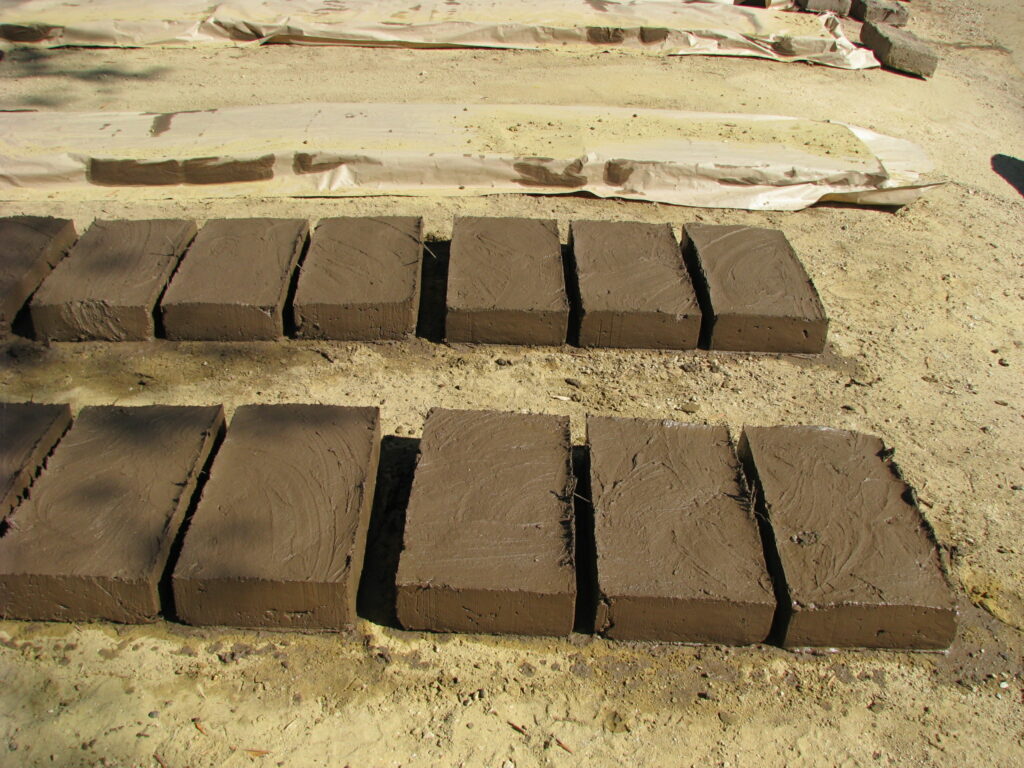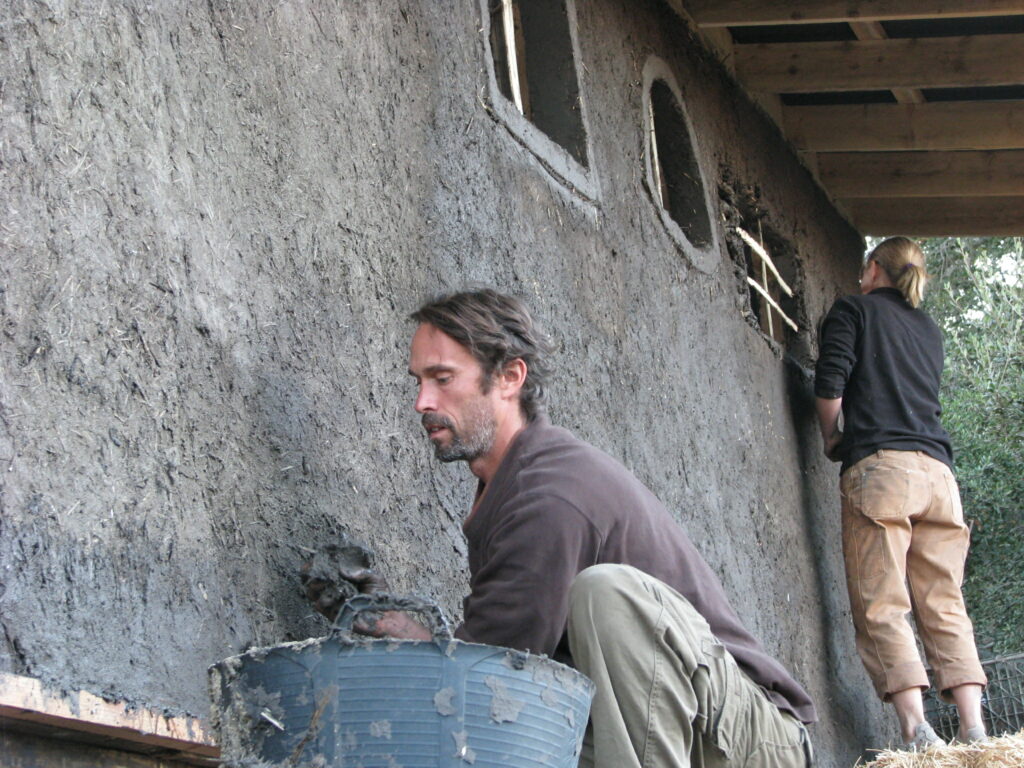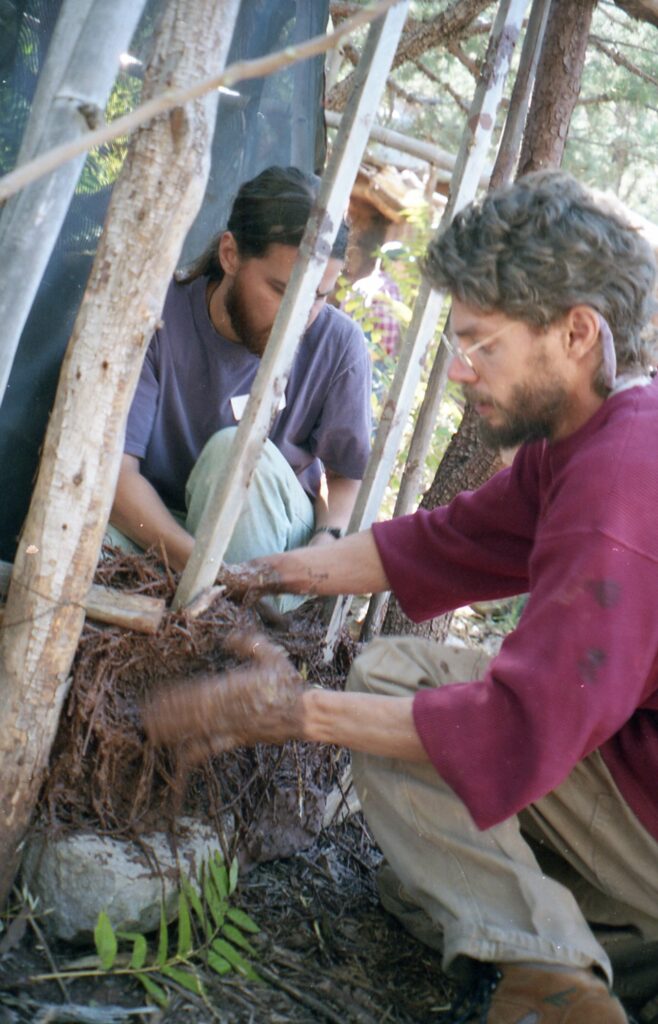Marialyce Pedersen’s house in Altadena, California was reduced to ash that spilled into the pool, turning the water a toxic black. But along one wall, a sculpted pink bench and outdoor kitchen looked only slightly worse for wear. Pedersen had built the bench and kitchen using cob. “That is going to be the start of my rebuilding efforts. It is one little bright spot,” she said.
 Los Angeles area fires destroyed more than 15,000 homes and structures, just in one month. Former homeowners are starting to think about rebuilding. Those determined to stay want houses that the next fire will not burn easily and that, if burnt, will not turn the soil, water and air into a toxic hazard.
Los Angeles area fires destroyed more than 15,000 homes and structures, just in one month. Former homeowners are starting to think about rebuilding. Those determined to stay want houses that the next fire will not burn easily and that, if burnt, will not turn the soil, water and air into a toxic hazard.Los Angeles County Fire Chief Anthony Marrone has been telling residents to prepare for the next time. “We must manage the wildfire ecosystem,” he said at a recent community meeting, “but we really need to start with structure hardening,” the process of building resilient homes.
 Fans of “natural building” techniques, like the cob, see need and opportunity. Adobe bricks made of clay, sand and straw, similar to cob, have long been used in the Southwest.
Fans of “natural building” techniques, like the cob, see need and opportunity. Adobe bricks made of clay, sand and straw, similar to cob, have long been used in the Southwest. More recently, straw bale houses have been constructed with walls made of insulating straw and a coating of fire-resistant plaster.
More recently, straw bale houses have been constructed with walls made of insulating straw and a coating of fire-resistant plaster.Pedersen was one of about 40 people who joined a recent workshop on the eastern side of Los Angeles to brainstorm a way forward with natural building techniques. A petition has received nearly 2,000 signatures calling for adoption of natural building techniques by government officials. “A lot of people just feel it’s inherently insane to just rebuild the same way,” one resident said. She wants to change the idea of a beautiful home from exotic woods and materials to affordable and made from earth. But she also sees natural building techniques as working for people who want modern-looking homes. “It doesn’t have to be a hippy hobbit house” she said.
 Los Angeles County has a reputation among natural builders of being cautious, given the risks of a region plagued by earthquakes as well as firestorms. But some officials discussing the rebuilding effort have signaled openness to change. County Supervisor Kathryn Barger, who represents Altadena, said “Everything is going to be looked at,” when asked after a community meeting about building materials such as adobe. Los Angeles County Public Works Director Mark Pestrella, one of the officials coordinating site clean-up and construction permitting, said that groups should come to his department to discuss new materials. Bring along designers and engineers to strike agreements on what works, he said. “We have plenty of adobe structures that have been built in LA County up in some of these fire areas,” Pestrella said. LA has a process for accepting alternative building materials. “It’s just a matter of ‘Is it in the code or do we have to go through an alternate means of review’? We have the capacity.” That is encouraging to Ben Loescher, an architect who is a longtime advocate of adobe. “I think it’s obvious to everyone that business as usual is not working.”
Los Angeles County has a reputation among natural builders of being cautious, given the risks of a region plagued by earthquakes as well as firestorms. But some officials discussing the rebuilding effort have signaled openness to change. County Supervisor Kathryn Barger, who represents Altadena, said “Everything is going to be looked at,” when asked after a community meeting about building materials such as adobe. Los Angeles County Public Works Director Mark Pestrella, one of the officials coordinating site clean-up and construction permitting, said that groups should come to his department to discuss new materials. Bring along designers and engineers to strike agreements on what works, he said. “We have plenty of adobe structures that have been built in LA County up in some of these fire areas,” Pestrella said. LA has a process for accepting alternative building materials. “It’s just a matter of ‘Is it in the code or do we have to go through an alternate means of review’? We have the capacity.” That is encouraging to Ben Loescher, an architect who is a longtime advocate of adobe. “I think it’s obvious to everyone that business as usual is not working.” One major question for builders is whether earthen materials are appropriate for earthquake country. Loescher said that “New Zealand, which is also a center for earthquakes, had adopted rules for buildings made from earth. Physics and earthquakes are not that different around the world,” he said wryly. “In California, all masonry structures are required to be reinforced,” he added. “The same thing can be done with earthen materials, whether it’s cob or adobe, compressed earth block, or rammed earth.”
One major question for builders is whether earthen materials are appropriate for earthquake country. Loescher said that “New Zealand, which is also a center for earthquakes, had adopted rules for buildings made from earth. Physics and earthquakes are not that different around the world,” he said wryly. “In California, all masonry structures are required to be reinforced,” he added. “The same thing can be done with earthen materials, whether it’s cob or adobe, compressed earth block, or rammed earth.” Natural builder Chris Martinez helped Pedersen build her outdoor kitchen. His nearby house was destroyed, except for a cob bench. He notes there are questions such as how to finance new buildings and how to get insurance – problems that may slow conventional builders as well after the fires. He aims to push forward with like-minded homeowners who could lobby and work together. “This is like a pivotal point of our community,” he said. “It gives us the option to either learn from our mistakes or we could continue doing the same thing over and over again.”
Natural builder Chris Martinez helped Pedersen build her outdoor kitchen. His nearby house was destroyed, except for a cob bench. He notes there are questions such as how to finance new buildings and how to get insurance – problems that may slow conventional builders as well after the fires. He aims to push forward with like-minded homeowners who could lobby and work together. “This is like a pivotal point of our community,” he said. “It gives us the option to either learn from our mistakes or we could continue doing the same thing over and over again.” You can read the original article at www.reuters.com
You can read the original article at www.reuters.com

Tossing mud on a wall with a shovel is faster than hand work…
It is quite possible that dipping hay bales in a clay slip would make them firproof, and easy to stucco
While that is true, it is best not to use stucco on straw bale walls because it inhibits their breathability. An Earthen or lime plaster is much better.